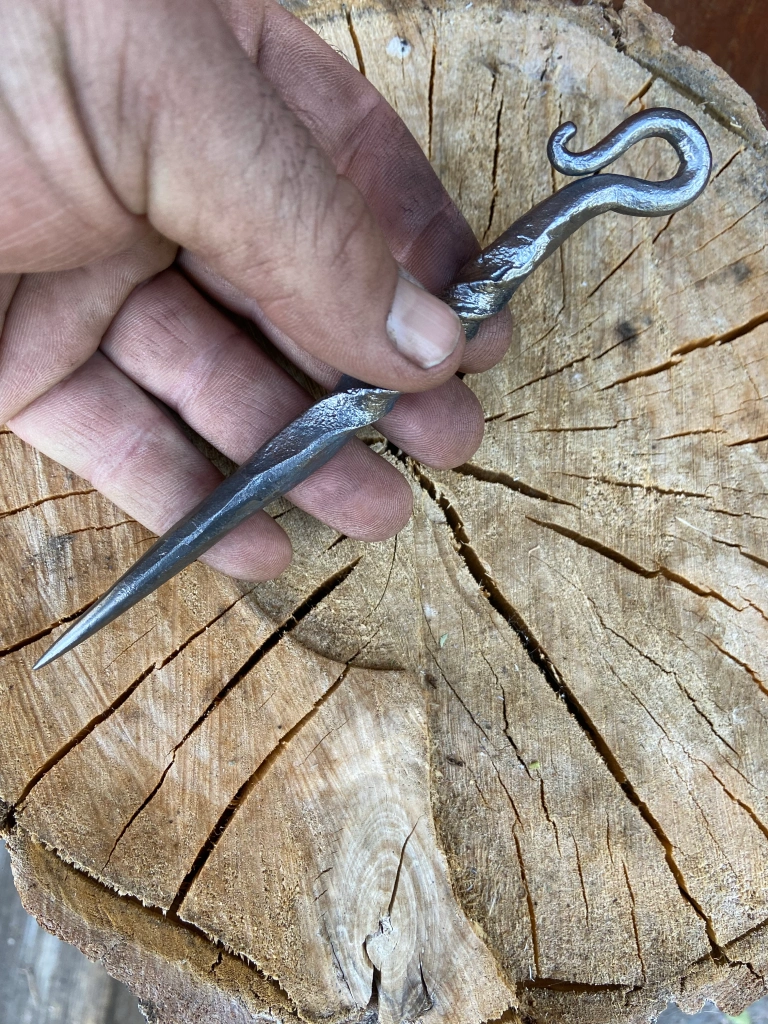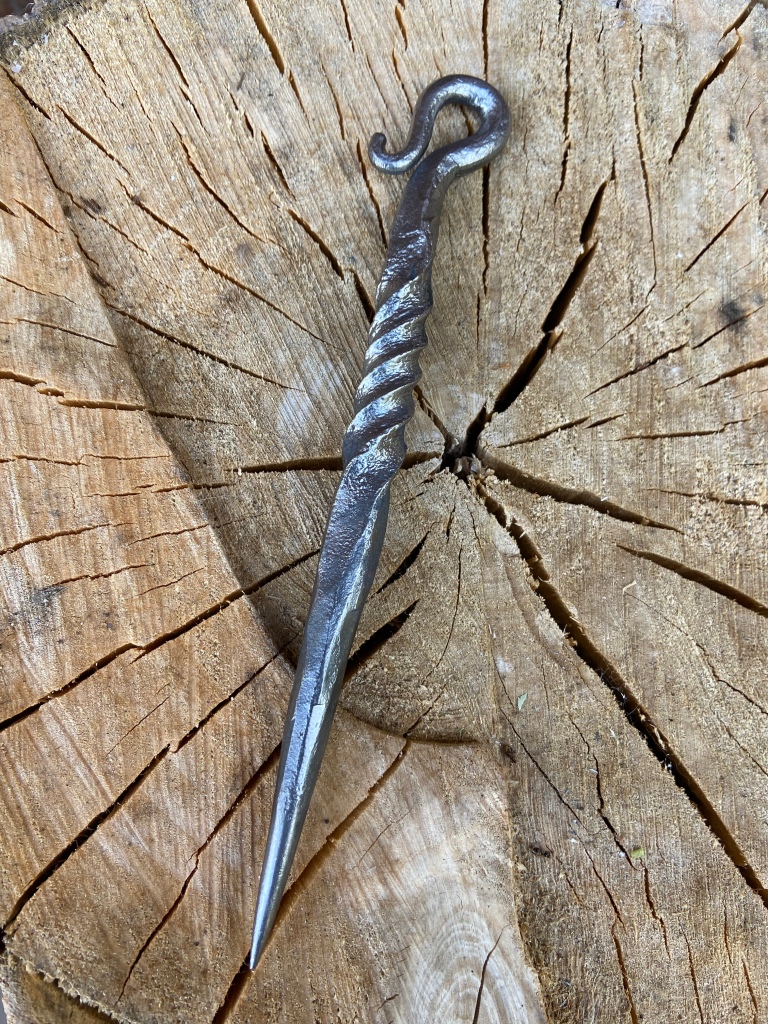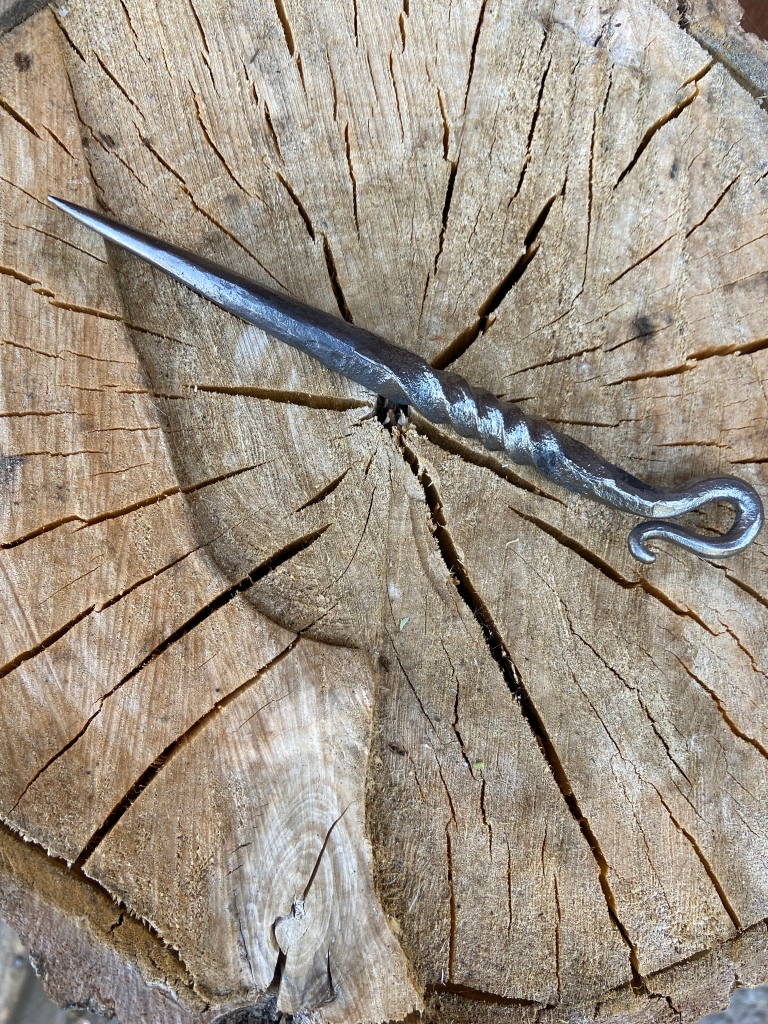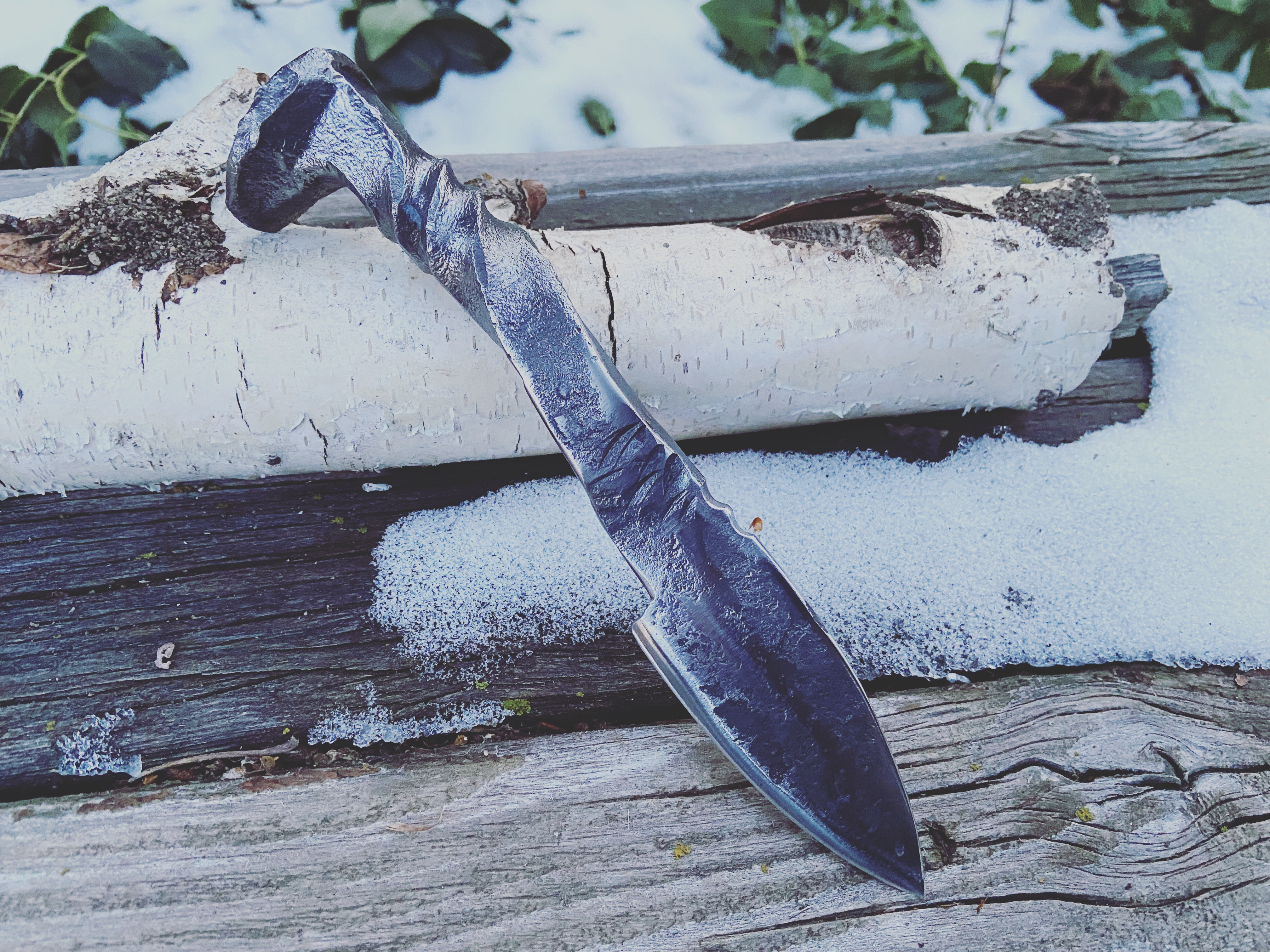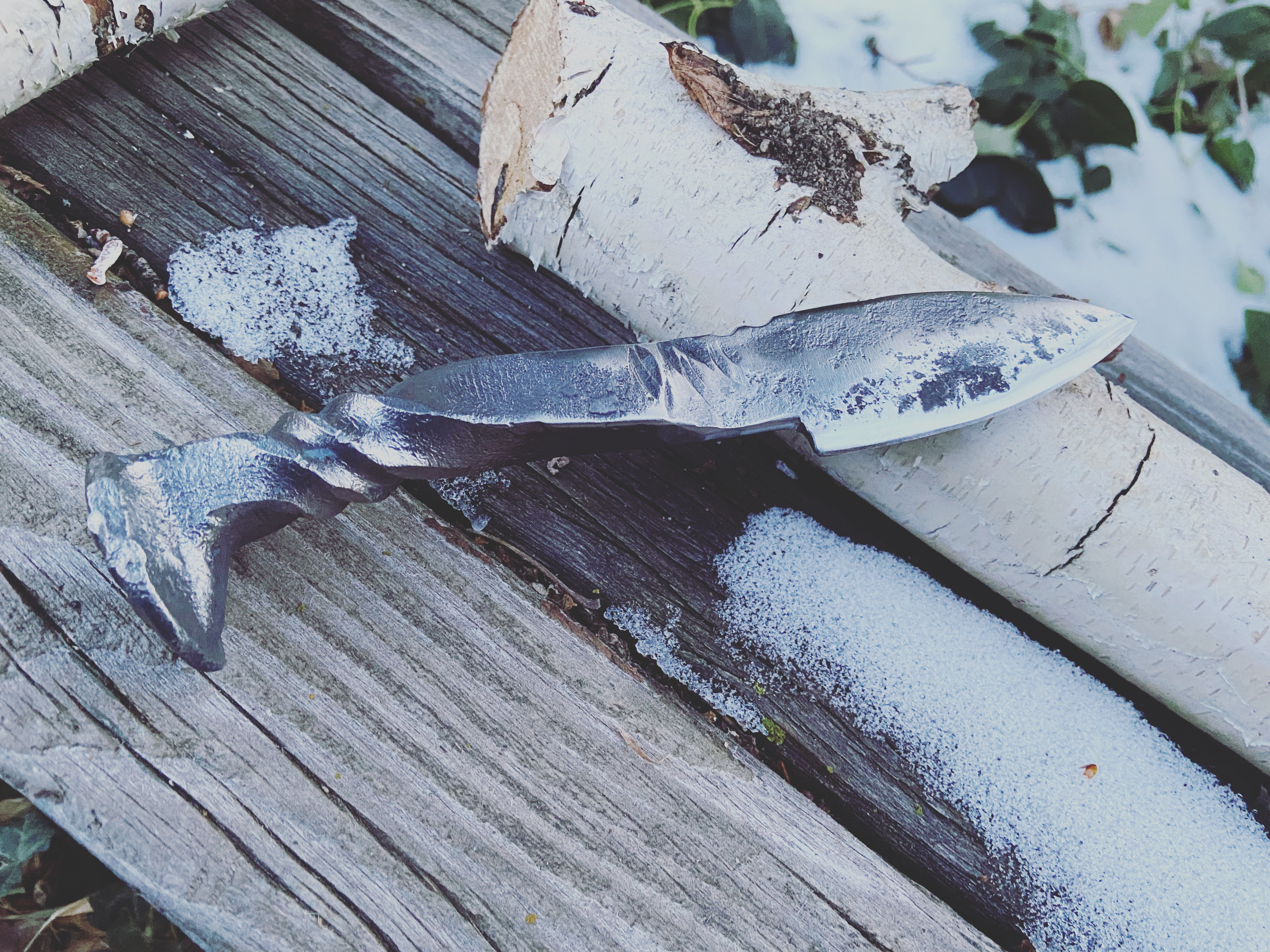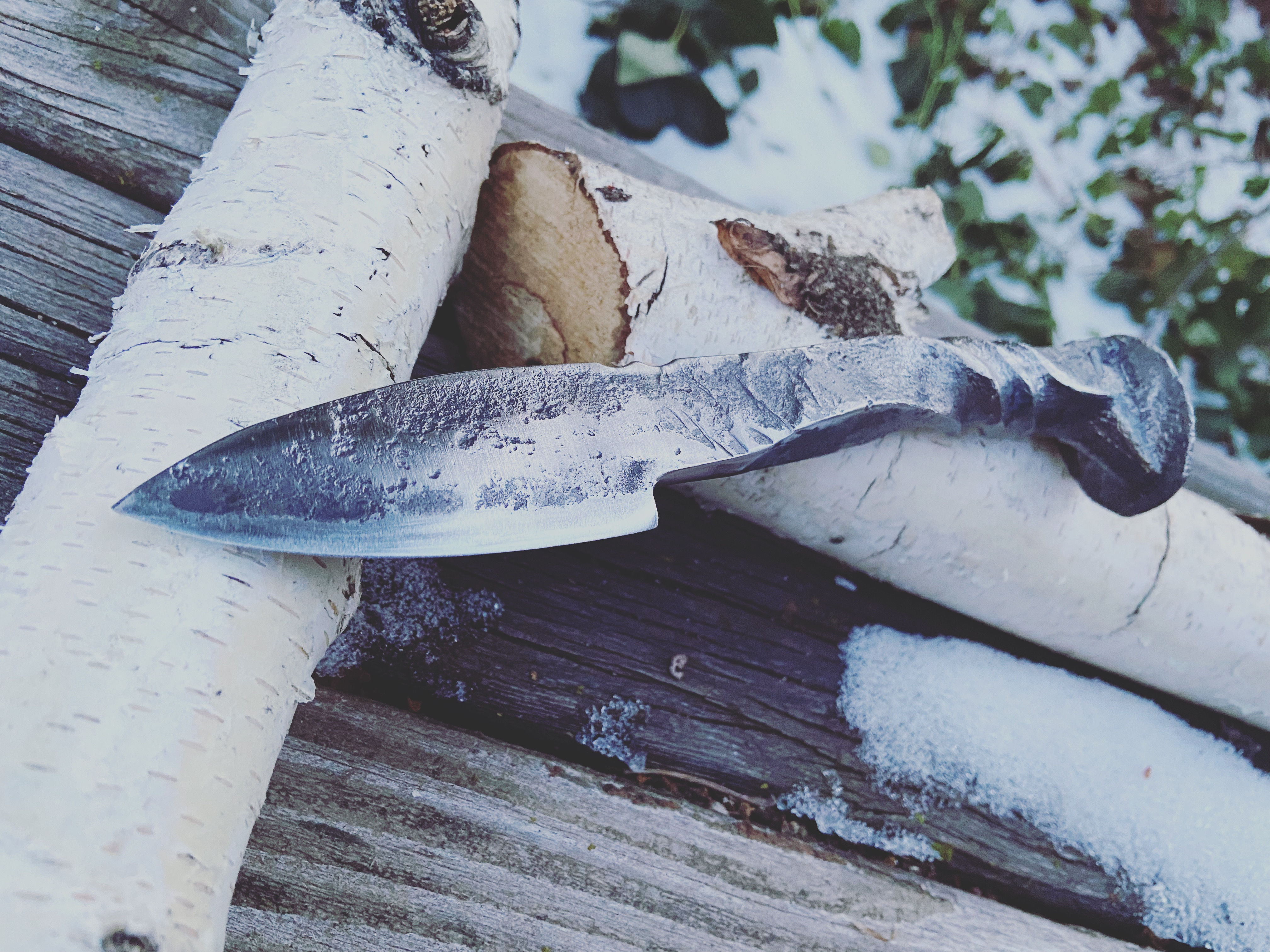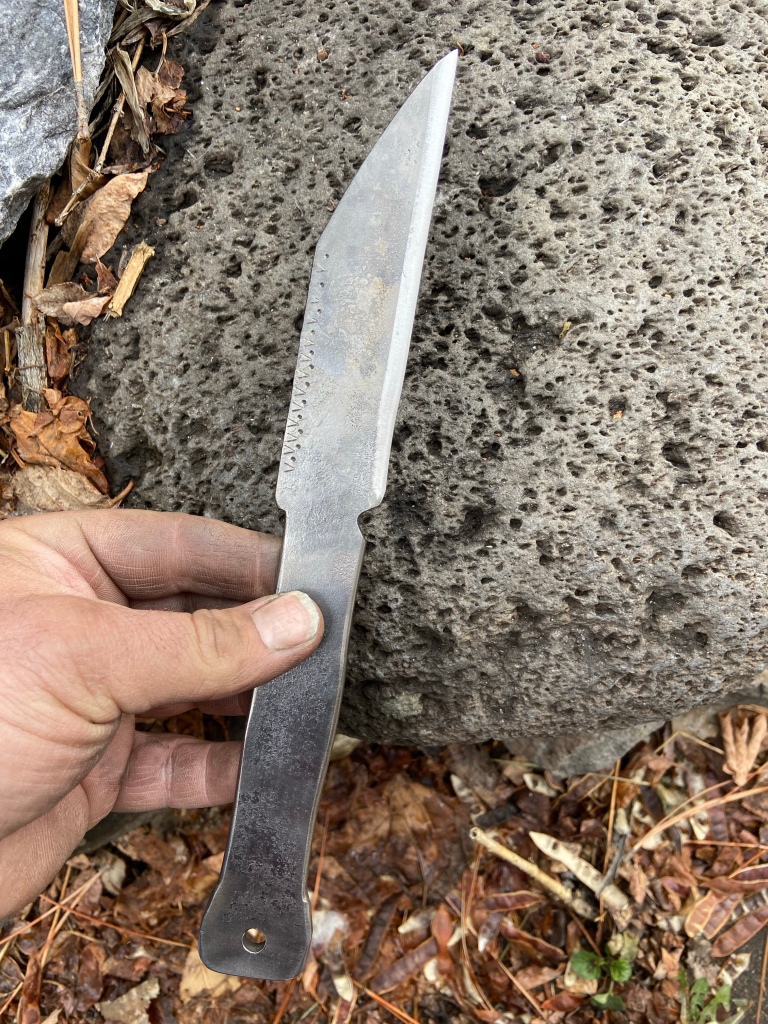Dithmarschen Mjönir
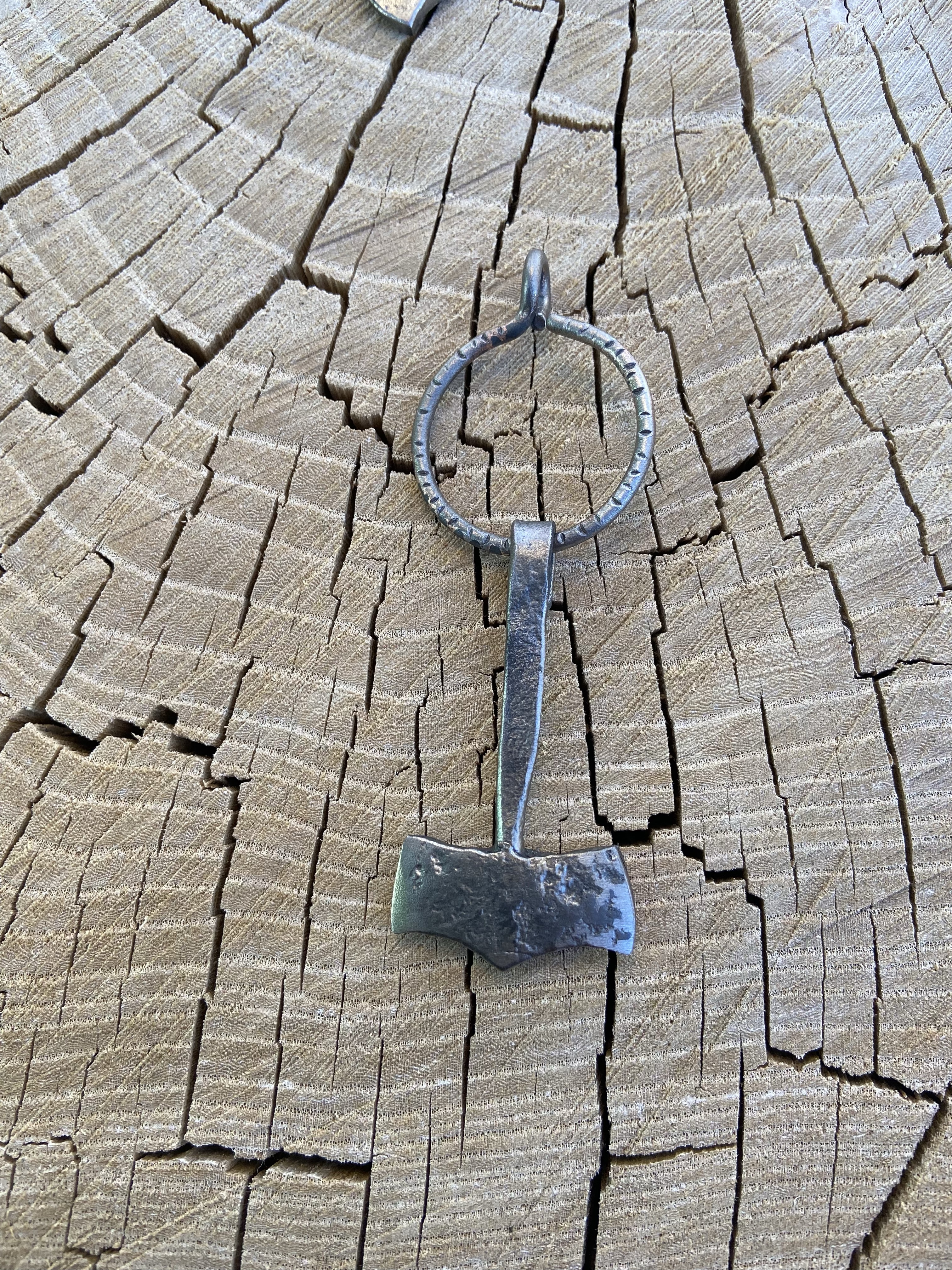
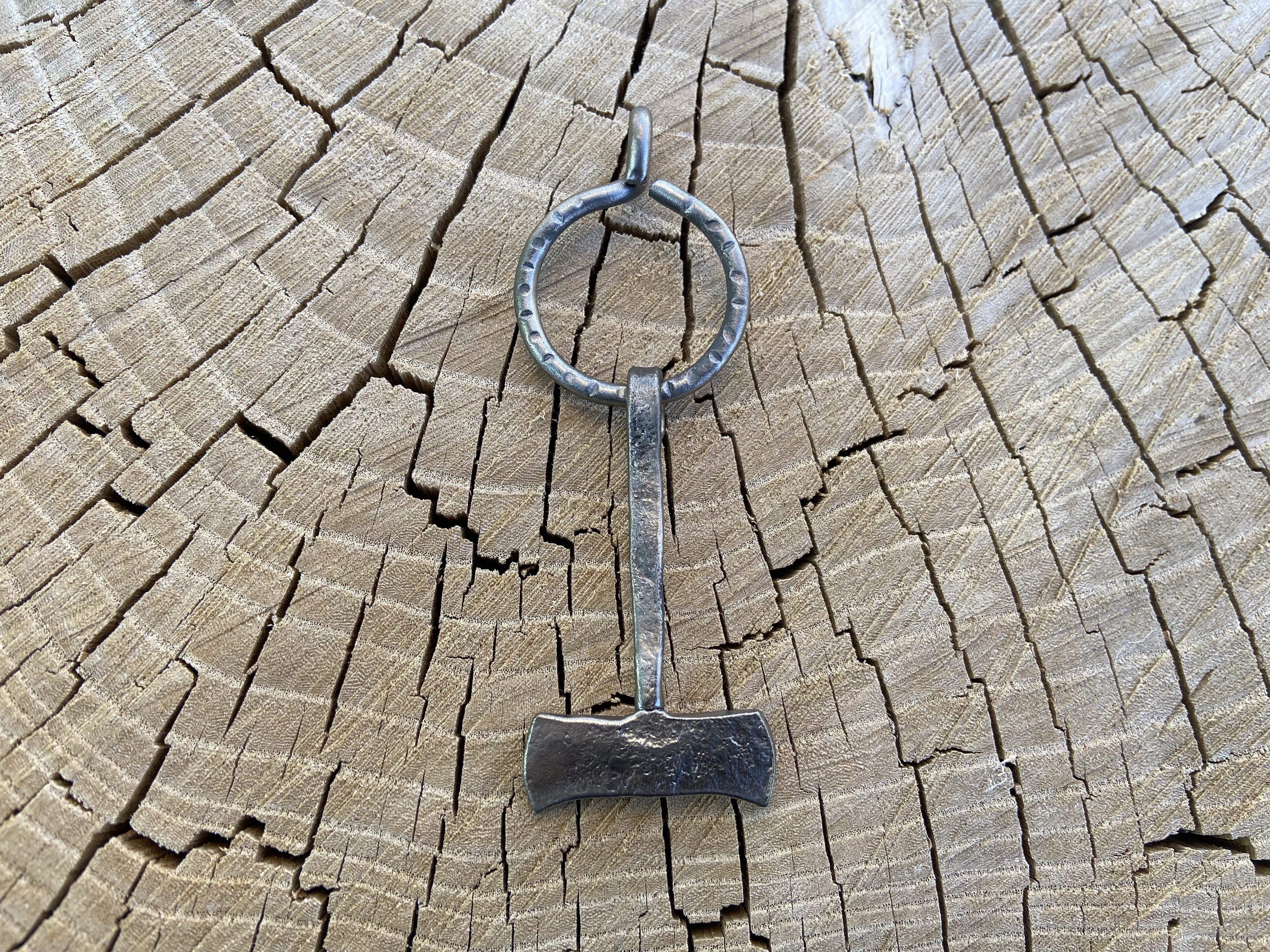
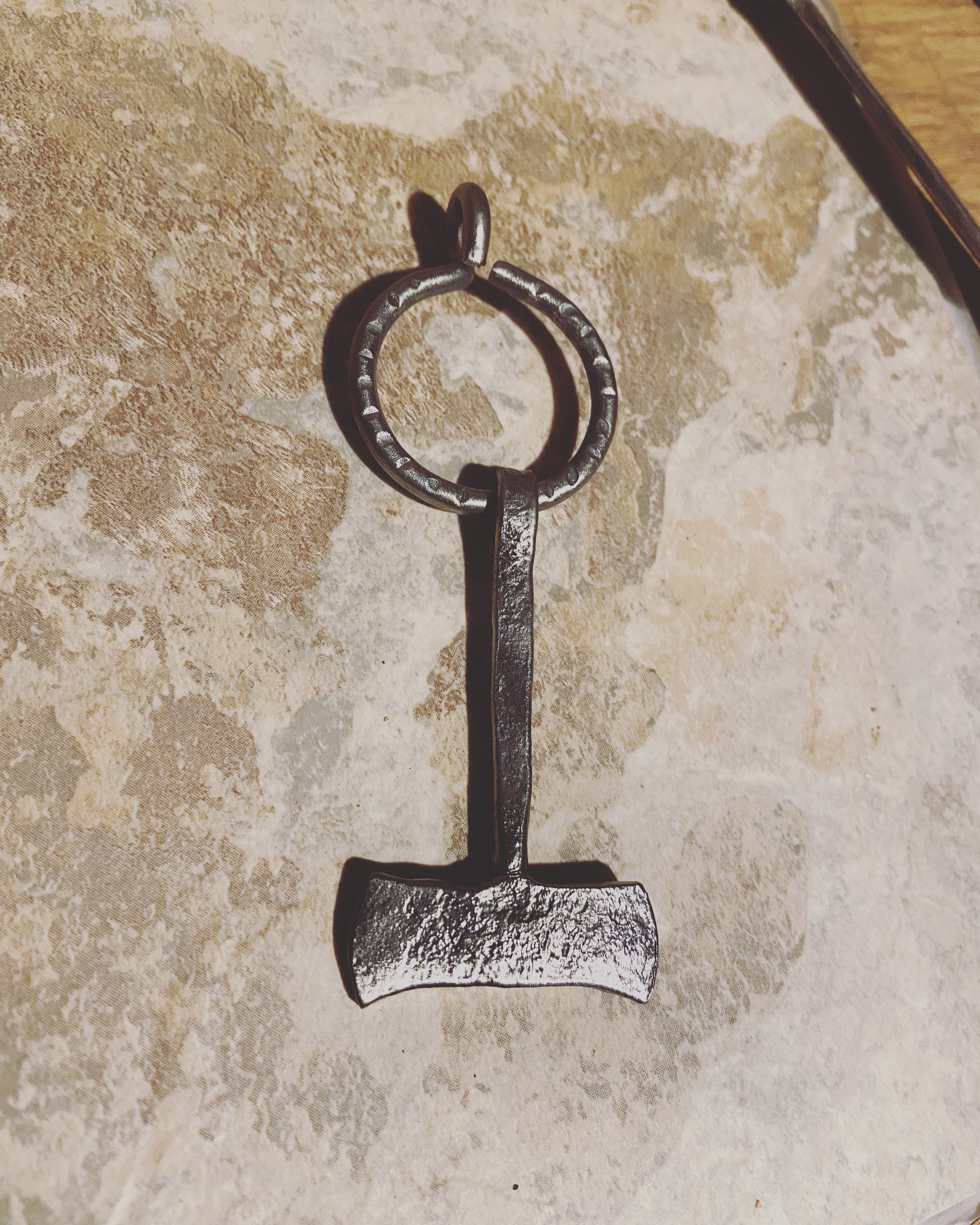
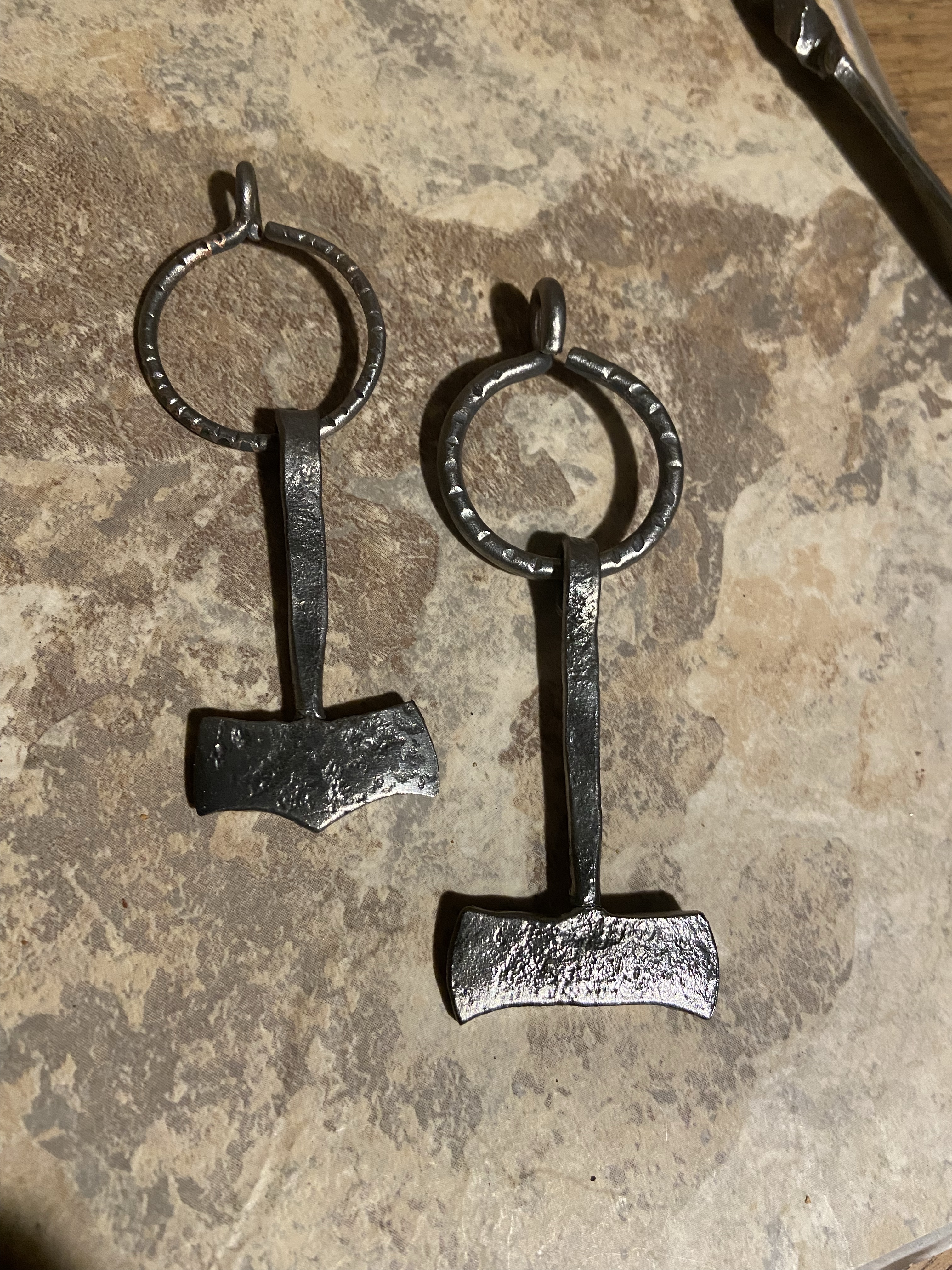
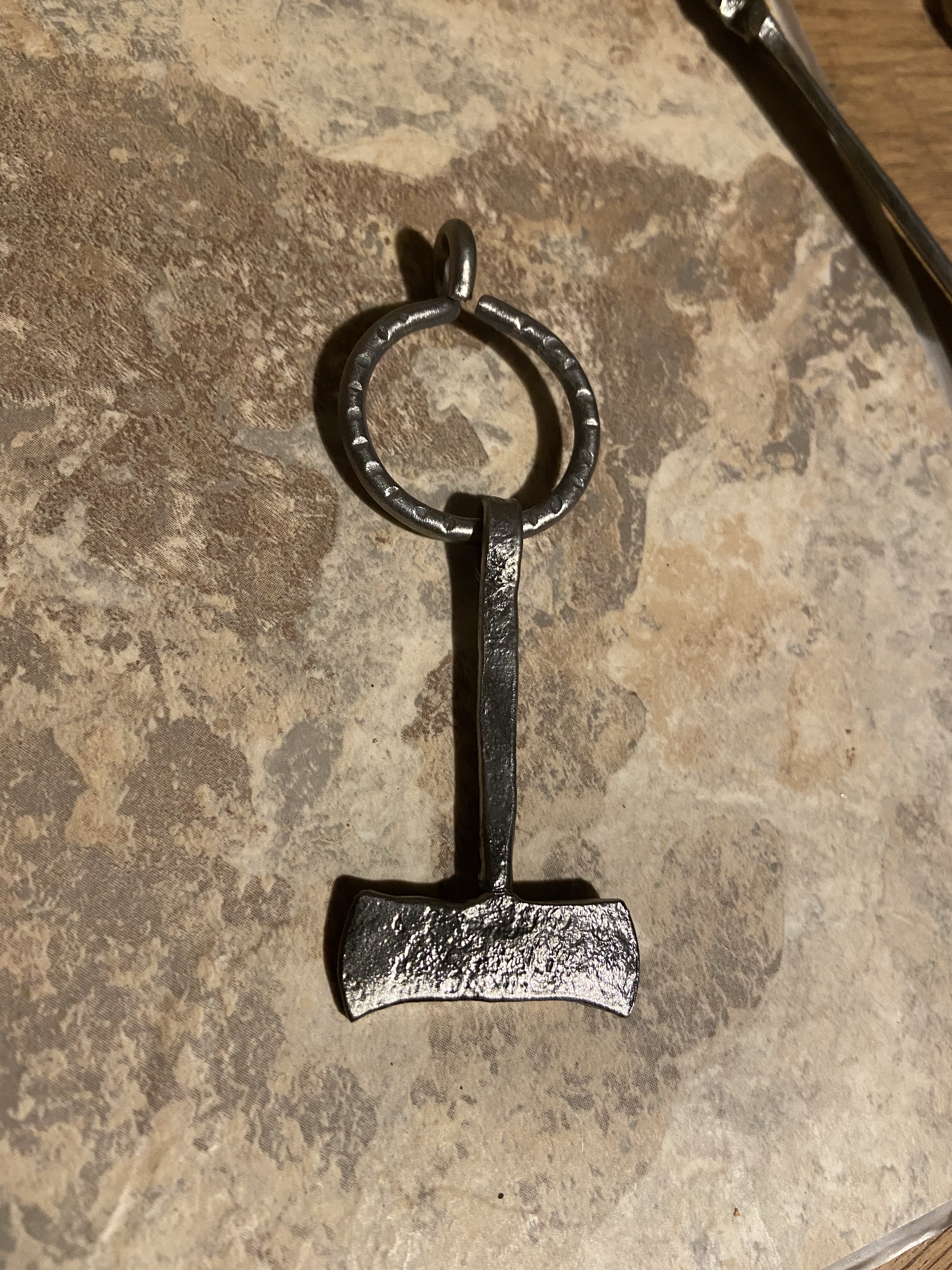
Hroð-
Etsy back up.
https://www.etsy.com/shop/NorseWest
After forever the forge is back in action. Trying to find a trip to Denmark/Germany. no customs just what is on here is available for now. Not back to knives yet. Hammer arm is a bit rusty yet.

Skål.
Hröð-
Anglo Saxon word of the day: Yþlad
Anglo Saxon word of the day:
ȳþlād (voyage, crossing) poetic sense.
From:
Proto-West Germanic: *unþi
Old English: ȳþ
Middle English: ythe, uthe, ithe
English: ithe
Old Saxon: ūthia
Old Dutch: *unthia, *untha
Middle Dutch: unde, onde
Dutch: onde (dialectal)
Old High German: undia
Middle High German: unde, ünde
German: Unde (obsolete, dialectal)
Yiddish: אינד (ind)
Old Norse: unnr, uðr
Icelandic: unnur
And:
Old English: lād, ġelād
Middle English: lad, lode, loode
Scots: laid, lade
English: lode, load
Old Frisian: lāde, lēde
Old Saxon: lēda
Middle Low German: leide
→ Norwegian: leide
→ Old Swedish: leidh
Swedish: lejd
Old Dutch: *lēda, *leida
Middle Dutch: leide
Dutch: lei
Old High German: leida
Middle High German: leite, geleite
German: Leite, Geleite
Old Norse: leið
Icelandic: leið
Faroese: leið
Norwegian:
Norwegian Bokmål: lei, led
Norwegian Nynorsk: lei
Old Swedish: lēþ
Swedish: led
Danish: led
→ Proto-Finnic: *laita
Estonian: laid
Finnish: laita
→ Proto-Samic: *lājδ
Bonus:
Wrǣtt (Ornament, jewel)
Hroð-
Book of the month (June)

Hilda Roderick Ellis Davidson is quickly becoming a favorite author of mine. Great detail and everything kept in context. I do love comparatives though I am biased.
Hrøð-
The Hunters Night (Heathen Yule tale)

Late is my departure from this station far afield-
I know too well the night upon I ride-
hooves through ice rip on moor and heath-
the cold night air cuts my face like the sword of winter-
my mistake now inflight hard born to the back of my horse-
the moonlit frozen fields giving solace-
before me swelling in black the holt awaited my ill fated journey-
the closing in of the night sky I know who rides on mist and moonlit ray-
Herne with hound, Woden Shinning Eye-
my faithful gold comb holds the line-
blackened oaks reach for heaven as if clutching hands from the mound-
the narrowing path closing in alas, the oak gate is in site-
the flickering of Elven eyes behind each stone and post betray my flight-
I have drawn the gaze of those unseen in this midwinter charge to home-
merry I made too well and left my host to late to escape the swelling night-
there it it is the gate of the wood-
reigns taut and pace held fast as the cover of oaks break-
a swell of mist has taken the moor, the wind has grown restless-
the path now obscured still bearing hard, a visage doom in the mist grim and unmoving-
upon a ghostly steed the figure stood, a hunter with hat and cloak in grey-
my horse stopped cold as if by unseen reigns, my personage thrown thusly to the earth-
my wits shattered with the doom of my situation-
the hunter now dismounted towards me moves like an eagle to prey, I fail to stand awaiting the cursed spear-
The figure spoke: Know I do you traveler? brave dumb or both is any man in want to wander on such a night-
I lay speechless, The figure spoke: Stand up now son of men. The figure put forth his hand ghostly white in the light of the moon-
In my state I grasped the hand and was pulled to my feet-
The hunters face obscured but for a glint of his one eye-
he returned to his horse procuring a flagon-
The figure spoke: Of this drink take for all chill should leave you traveler-
I drank from the vessel a brew of strange import, my eyes saw, ears heard and of sudden importance could see as if daylight shown-
The Figure spoke: Take to your mount traveler, us to join you are required-
My eyes now gleaming from the brew could see the hunters and hounds in a host of ghostly fury all around me-
To my horse I took, the hunter with spear outreached touched my horses reigns and as if by the haunting ring of that iron doom myself and horse became as the host-
The figure Spoke: Ride hard son of men, cut the sky and moonlit night , the souls await our roaring host-
Ride I did with the host, a booming throng, from the lands bellow came men of ancient times each brought up into the host-
a fleet ghostly horse given until the host could hold no more-
over town and wood we rode bringing the departed Wigenda to our fray-
My mind was lost, sight blurred as the fury rolled-
Awakened by my horse under an oak with still clinging to green, old gold comb you are still in good standing-
I looked upon myself to see if mortal wound had befell me but Lowe to my hands did find ingots of gold-
among the gleaming bits a strange addition did I find, an amulet of a mask with horns becoming birds, it shown blue as if fired from within-
my journey of which could never be told to another I kept at heart-
on the witching night of those old fires, of that old Winterfylleth tide the amulet would begin to ring and glow until the Yule had passed-
To the holt I returned some winter eves but to only hear the din Woden Shinning Eye passing with his furious hunters in the ghostly mist.
Fin-
obviously by influenced other poems, myths and folklore but In my own words.
Copyright 2020 COS.
Glæd Ġēol
Hroðbeorht-
Yule-Ġēol-Jul (hāliġdæg)

(Public Domain)
Anglo-Saxon-Norse reference:
þ Th-(Th)or “Thorn”
ð Th-Wi(th) “Eth”
The Yultide is a custom or holiday from Germanic culture predating the suppression and removal of native European customs by the church. The month begins at “ǣrra ġēola” Yule is a season/month of the year. Most of the customs associated with modern day Christmas are lifted from Germanic and Celtic traditions. The Tannenbaum stems from early modern era Germany however the custom of evergreens as symbols of immortality in dark winter times goes well back to our Ancient past, possibly even as far back as the hunters and farmers. It should be noted the evergreen decorations were widely used across the world in indigenous polytheistic religions. The word Yule comes from Anglo Saxon Ġēol (G says Y) and is believed to have derived from PIE word meaning joy, however I have found etymology suggested it is related to a word meaning wheel as in the cycle of seasons or Sun. In Nordic countries the word still stands for anything related to Christmas or Yule in the form “Jul”. Yuletide meaning the “Yule-Time” referring to the period of Yule. In Anglo Saxon there is “ǣrra ġēola” (Before Yule) and “æfter ġēola” (After Yule). One of Odin’s names is Jolfaðr (Yule Father). This period is also known as Midwinter. In the Anglo Saxon seasons October 31st is Winterfylleð thus making ġēol Midwinter. Many customs representing various aspects of lore like Santa Clause comes from a mixing of stories and traditions. The Jolfaðr gift giver likely derives from Odin but the Greek Saint Nicholas had its influences and various traditions began to merge across Europe. Characters like Krampus, The Tomtens, Elves and more are derived from Pre Christian traditions of the Midwinter. We also see in Sweden the Julbocken (Yule Goat) in Sweden. These Goats draw a carriage with the Tomten aboard carrying gifts. Many traditions in the Alps have Krampus or other Woodwose like creatures who travel with A Jolfaðr like figure dishing out whippings on naughty children. Also Young men dress as creatures and chase young women, a custom likely primordial in nature. The Baltic Countries have similar traditions as well as Slavic regions. Some of these traditions likely passed down to us from the Alpine Celtic tribes. It pervades Indo European culture even after the suppression of our native religions. What we have in America or other western English speaking areas is a spattering of all the traditions brought by our ancestors from Germany, Poland, Scandinavia, Holland, England etc. In reality it is a beautiful and positive Holiday centered around feasting, folk legends, ancient cultural customs and a sense of joy or merriment in the dark half of the year. Those in the Northern hemisphere have a period that is long and drawn out till spring. The prospect of good fun, feasting, mead and rituals to keep kin safe and in prosperity brought hope to our ancestors in the dark winter. Had they not persisted where would we be?
The Wild Hunt:

The Wild Hunt or Wild Host is a mythological event from the deep past believed to be taking place between Between Winterfylleð and ġēol. Customs from Germany, England, Scandinavia and The Alps all depict some form of this ghostly procession. Each depiction lends a local flavor to the cycle but the central theme is Ancient Gods and hunter spirits drive horses and hounds across the night sky in a great booming host. Most well known perhaps is that Oðinn/Woden/Wotan leads this host and has returned to Middangeard to collect the lost souls wandering the Earth. Other stories have þorr leading or Frigga in the form Frau Wode (Wodan’s wife). I have a very deep ancestral connection to this particular folk story in Mecklenburg and Uckermark North Eastern Germany. Frau Wode or Frekka leads the host and brings either misfortune or good fortune depending certain circumstances, she is also followed by a pack of hounds with glowing eyes who can wrought serious damage. Other tales have her simply assisting while Wodan leads though It should be noted that this Goddess or Form of Frau Frekka/Frick is deeply entrenched in the folk legends of North Eastern Germany. In England local versions exist with unique local Deities or spirits wandering the winter nights with packs of hunters and hounds such as Herne the Hunter. The concept of the Wild Hunt could derive from Celtic roots or be equally shared amongst Germanic and Celtic peoples of antiquity. The concept of the Wild Hunt follows the basic native European view that Samhain or Winterfylleð (Among other names) is the opening of the energetic spiritual veil where these mystical beings enter our reality to do any number of tasks on Earð. Frau Wode would as described above be accompanied by hounds who may slip into your home to warm itself by the fire. If you attempted to remove the hound it would turn to stone and return to life every night at midnight to howl. Each howl was a curse on the family of the offender. Only Frau Wode can break the spell on Christmas eve. I associate the Goddess Frau Wode with Frigga given a decent amount of etymological/linguistic evidence.
Tannenbaum:

Glade Jul by Viggo Johansen (Danish Painter)
We know the basic modern Tradition of the Tree is from Germany and was introduced elsewhere by Germans however we do not know how deep the tradition stems back to pre christian times. Germanic tribes worshipped trees and had the Sacred Yggdrasil and Irminsul. The bringing in of Greenery in the winter is ancient in origin and possibly associated with a Yule-Tree like concept but evergreens as stated above were used across the world. As with many of the discussed traditions it is now merged with other later traditions. I personally view the Tannenbaum as a symbol of life in dark cold times and that sentiment is repeated in the book “The Solstice Evergreen” by Sharyl Karas (1991) that covers the use of Evergreens in several cultures.
A unique tradition among Shetlanders (Scotland). Article link bellow.

Photo is from Scotsman.com
Krampus:

Krampus who has risen to modern popularity is arguably a hold over of much earlier Native European customs amongst Alpine Celts and Germanic tribes who was easily applied to later traditions. We see this custom of dark and light play a roll in the Winter Solstice across Europe. the Dark and sinister yet humorous Krampus and the Jolly wise gift bringer. This combined with ancient beliefs in the Woodwose, Ettins, Elves , Wild men and Gnomes bring these beings front and center for the Yule Tide festivities. We see similar characters across Europe in similar but unique customs to their regions. The magic of snowfall over mountains and the whisping presence of Wotan’s host as the beings of ancient lore visit for a Glühwein or Gløgg. Best be a good host or Krampus might cut a switch. Bruce, Mourice (1958) writes that no other figure could Krampus reflect than the Horned God of Ancient Europe. Depictions of the Celtic God Cernunnos show him fully adorned in Antler headdress in a meditative state.

Credit: National Museum of Denmark. Natmus.dk. Gundestrup Cauldron.
Tomten or Nisse:

Credit: Nasjonalbiblioteket Norway.
The Nisse (Danish/Norwegian) and Tomten (Swedish) is a small (but sometimes 2ft t) house spirit in Scandinavia who looks like the popular depiction of Gnomes. These generous fellows help out with the farm or house and keep prosperity or good luck for the property. The Book (The Tomten) by Astrid Lindgren based on poems by Viktor Rydbergand Karl-Erik Forsslund is one of my all time favorite Holiday stories and is available on Audible (Not sponsored). The collecting and decoration of Tomtens is now very popular and has become popular outside of Scandinavia. Should you fail to give the Nisse his due (a special porridge) and the butter be misplaced he may exact revenge on you or your property. In modern Sweden he is the gift giving character.

John Bauer (1912) Julbocken.
Jolfaðr-Ġēolfæder:

(Photo Copyright unknown)
There is a myriad of articles about the nuance that led to Santa Clause so I will leave that be. I will however talk about Oðinn as Santa Clause. The old wise one eyed God was known also as Jolfaðr (Yule Father) or Jolnir (Yule one) and he brought gifts but the Reindeer were nowhere to be found. He rode across the sky upon his horse Sleipnir. The tradition of hanging stockings originates hear from my research as carrots were left out for Sleipnir to eat. Oðinn also is one of many figures associated with the Wild Hunt where he rides and claims lost souls from Winterfylleð to Ġēol. Oðinn is among the most multi faceted Gods in that he is both a grim and stern God of death, battle, honor and war but also a God of wisdom, poetry, ecstasy, mirth, victory (Sig) and feasting.

Georg von Rosen – Oden som vandringsman, 1886 (Odin, the Wanderer.
Yule Lads (Iceland):
The Yule Lads are a fairly modern (17th century) Holiday custom in Iceland where 13 Yule lads come to town and cause havoc if not given their favorite snacks. If given their snack a gift will be left in a shoe n the window sill. Some of the terminology is older like their Mother Gryla who appears as a Troll in older stories.
https://icelandwithaview.com/the-13-yule-lads-of-iceland/
Yule Log:
1725 Henry Bourne suggests:
Our Fore-Fathers, when the common Devices of Eve were over, and Night was come on, were wont to light up Candles of an uncommon Size, which were called Christmas-Candles, and to lay a Log of Wood upon the Fire, which they termed a Yule-Clog, or Christmas-Block. These were to Illuminate the House, and turn the Night into Day; which custom, in some Measure, is still kept up in the Northern Parts. It hath, in all probability, been derived from the Saxons. For Bede tells us, That [sic] this very Night was observed in this Land before, by the Heathen Saxons. They began, says he, their Year on the Eight of the Calenders of January, which is now our Christmas Party: And the very Night before, which is now Holy to us, was by them called Mædrenack, or the Night of the Mothers … The Yule-Clog therefore hath probably been a Part of those Ceremonies which were perform’d that Night’s Ceremonies. It seems to have been used, as an Emblem of the return of the Sun, and the lengthening of the Days. For as both December and January were called Guili or Yule, upon Account of the Sun’s Returning, and the Increase of the Days; so, I am apt to believe, the Log has had the Name of the Yule-Log, from its being burnt as an Emblem of the returning Sun, and the Increase of its Light and Heat. This was probably the Reason of the custom among the Heathen Saxons; but I cannot think the Observation of it was continued for the same Reason, after Christianity was embraced.
(Wikipedia)
The Date:
The overwhelming accepted date of Yule is on the Winter Solstice (12/21/12/22) . This being said some scholars have suggested dates such 1/28 based on theories around a lunar calendar. The Mōdraniht of the Anglo Saxons was set at what is now Christmas Eve as attested by Bede but in January (See above) A Night/Ritual/Holiday celebrating female ancestors. This may have been related to fertility ritual aspect at Yule-Tide. The exact date can be described as up for debate but currently most hold events on or around the currant Solstice dates. It should be noted that both January and December held the name Ġēol and the calendar did not match what we have today which has led to debate and theories on the exact debate.
Yule belongs to all of us who’s ancestors contributed to it over thousands of years. It has changed as all things do. some deny its origins, others embrace the ancient past while others see it as something secular however factually inaccurate that might be. Thankfully we live in a time and place where if we disagree on such details the worst it might end up is a dirty look or argument. Yule is an inspiring time of year for us not unlike it was for our ancestors. Never fear to dig deeper into the past for it is full of wisdom from our forefathers. These posts are just small samples of the folklore from Northern Europe. Take a stroll on Yule at midnight and see if you can hear the distant cry of hunters or Wodan calling his wayward souls.

(Public Domain)
Glæd Ġēol
Hroðbeorht-
Last of the leaves (seasons change)
Winter is approaching, the day called for nice couple of walks through the last of our deciduous forests to have leaves.

Žaltys of Saule

Large Snake charm inspired by Žaltys of Saule. The Grass snake in Baltic mythology is a sacred animal of the Sun Goddess Saule. Forged iron.
Hroðbeorht-
Alpendahl Forge.
First strike 2020

Hammer strike that is.
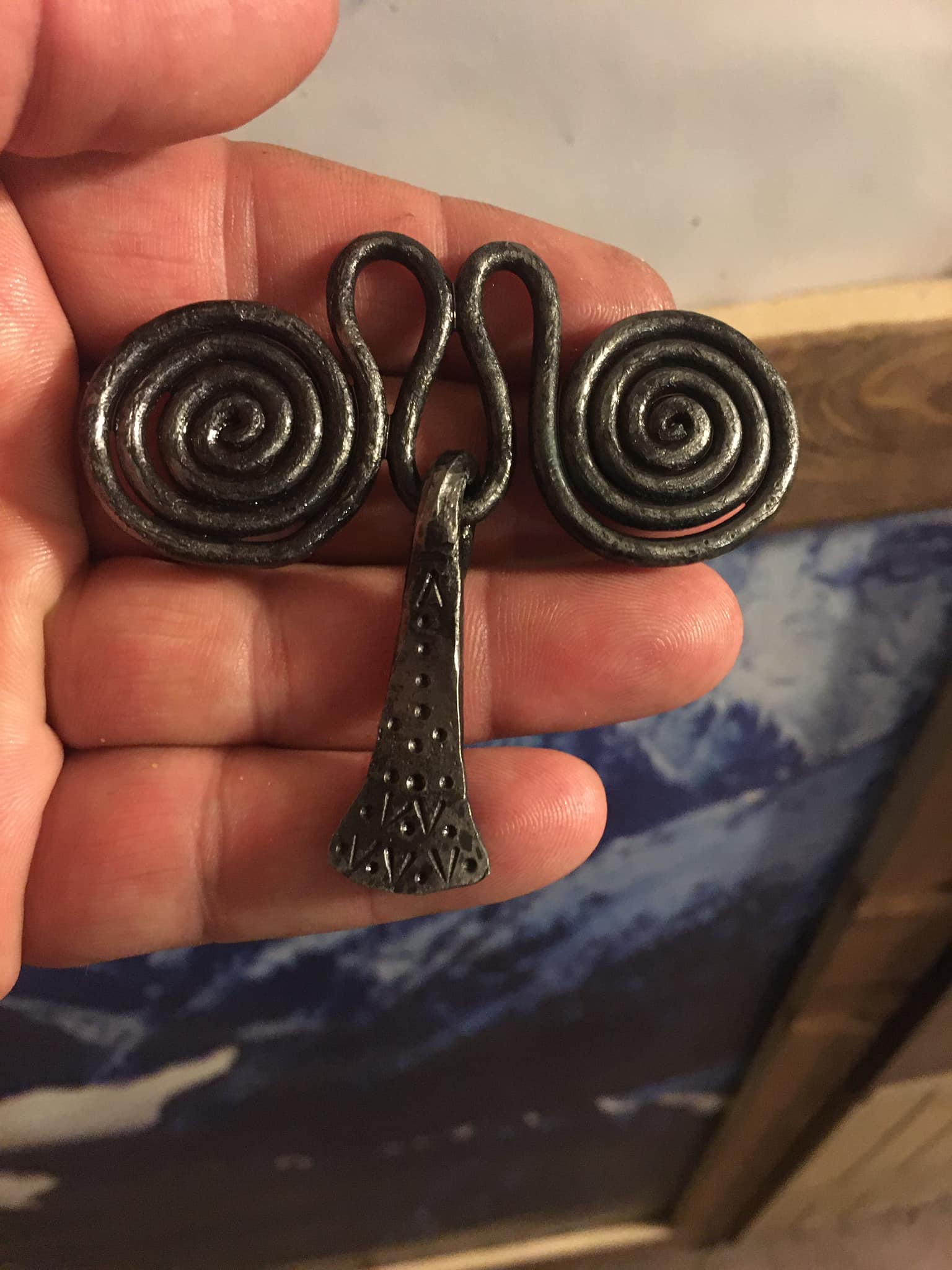
First forging since 2018. This amulet is inspired by a variety of sources, Primarily Hallstatt style spiral brooches but also Bronze age Axe cultures across Central and North Eastern Europe. The Axe could represent any of the Axe wielding Thunder Gods from Perkuns, þunar or Perun.
Forged Iron.
Hroðberht-
God Høst
Hail our ancient ancestors. Their journey brought knowledge of natural cycles, Technology and the greatest monuments of Northern Europe.
God Høst.
Anglo-Saxon word of se dæg: Hlutor
Anglo-Saxon word of se dæg:
ᚪᚾᚷᛚᚩ ᛋᚪᛉᚩᚾ ᚹᚩᚱᛞ ᚩᚠ ᛋᛖ ᛞᚫᚷ᛫
Hlūtor (pure, clear, sincere) from Proto Germanic “hlūtraz”. ᚻᛚᚢᛏᚩᚱ᛫
Compare:
West Germanic: *hlūt(t)r
Old English: hlūtor
Middle English: lutter
Old Frisian: hlutter
Old Saxon: hluttar
Old Dutch: luttira (plural)
Middle Dutch: luter (Middle and Modern Dutch louter is via High German)
Dutch: luyter (early modern)
Old High German: hlūtar
Middle High German: lūter
German: lauter
Dutch: louter
Gothic: 𐌷𐌻𐌿𐍄𐍂𐍃 (hlūtrs)
—
Bonus:
Orlæġ (Fate, Orlog, Orlay, Destiny) from Proto Germanic “uzlagą”. ᚩᚱᛚᚫᚷ᛫
Compare:
Old English: orlæġ, orleġ; orleġe
English: orlay
Old Frisian: orloch
North Frisian: oarloge
West Frisian: oarloch
Old Saxon: urlagi, *orlag; *orlagi, *orleg
Middle Low German: orloge, orlage, orlege
Low German: Orlog
Old Dutch: *orlog
Middle Dutch: orloge, oorlog
Dutch: oorlog
Old High German: urlag, urlac
Old High German: urlaga
Middle High German: urlage
Old Norse: ørlǫg
Icelandic: örlög; örlygi
Norwegian: orlog
Swedish: örlig
Danish: orlog
———

Hroðberht-
Anglo Saxon ƿord of þē dæġ:Weald
Anglo Saxon word of þe dæg:
ᚪᚾᚷᛚᚩ ᛋᚪᛉᚩᚾ ᚹᚩᚱᛞ ᚩᚠ ᚦᛖ ᛞᚫᚷ᛫
Weald-Wald (forest) from Proto Germanic
“walþuz”. ᚹᛖᚪᛚᛞ᛫
Compare:
West Germanic: *walþu
Old English: weald, wald
Middle English: wald, wæld, wold, wolde, wald, walde, weld, welde
English: wold, weald, wald, weld
Scots: wald
Old Frisian: wald
Saterland Frisian: Woold
West Frisian: wâld
Old Saxon: wald
Middle Low German: wôlt, wôld
Dutch Low Saxon: woold, woud
German Low German: Woolt, Woold, Wold
Plautdietsch: Woolt
Old Dutch: walt
Middle Dutch: wout
Dutch: woud
Limburgish: waadj
Old High German: wald
Middle High German: walt
Alemannic German: Wald
Swabian: Wald
Bavarian: Woid, Woold
Cimbrian: balt
Hunsrik: Wald
Luxembourgish: Wal
German: Wald
Rhine Franconian: Wald, Wall
Frankfurterisch: [valt]
Old Norse: vǫllr
Icelandic: völlur
Faroese: vøllur
Norn: vollj
Norwegian: voll
Old Danish: wold, wall
Danish: vold, val
Old Swedish: valder
Swedish: vall
Westrobothnian: vǫll, vall
————————-
Bonus:
Eolh (elk) Rune “Eolh” from Proto Germanic “Elhaz” also PG “Algiz”. Rune (elder) “Algiz”.
ᛖᚩᛚᚻ᛫
Compare:
Old English: elh, eolh, eolc, elch; ēola
Middle English: *elk
English: elk
Old Saxon: elaho, *elo
Middle Low German: elk
German Low German: Elk
Old Dutch: *elho, elo
Middle Dutch: elgh
(Dutch: eland)
Old High German: elah; elaho, elahho, eliho, elho; (elent)
Middle High German: elch
German: Elch, Elk
Luxembourgish: Elch
ᛉ (Algiz)
ᚺᚱᛟᚦᛒᛖᚱᚺᛏ-
Anglo Saxon word of þē dæġ: Dene-mearc
Anglo Saxon word of þe dæg:
ᚪᚾᚷᛚᚩ ᛋᚪᛣᚩᚾ ᚹᚩᚱᛞ ᚩᚠ ᚦᛖ ᛞᚫᚷ᛫
Dene-mearc (Denmark)
ᛞᛖᚾᛖᛗᛖᚪᚱᚳ᛫
Example:
Wulfstán sǽde ðæt he gefóre of Hǽðum. Weonoþland him wæs on steór-bord, and on bæc-bord him wæs Langa land, and Lǽland, and Falster, and Scon-ég; and ðás land eall hýraþ to Denemearcan.
Translation:
Wulfstan said that he went from Haddeby. He had Weonodland on the right, and Langland, Laaland, Falster, and Sconey on his left; and all these lands belong to Denmark.
——————————
Bonus:
Wita ( “wise” one who is wise)
also “wicca” (male sorcerer, witch, magus, wise one) Wicce (female sorceress)
wicce-dóm (witchcraft-sorcery)
wicce-cræeft (witchcraft)
ᚹᛁᛏᚪ᛫
ᚹᛁᚳᚳᛖᛞᚩᛗ᛫
ᚹᛁᚳᚳᛖᚳᚱᚫᚠᛏ᛫
ᚺᚱᛟᚦᛒᛖᚱᚺᛏ-
I did not write/create the translation. It came from text in a AS learning app.
Etsy Back Open
My http://www.Etsy.com/norsewest page is back open.
I will not be opening commissions due to a number of issues but the smaller made to order items are available!
Cheers and Happy New Year.
Hroth-

